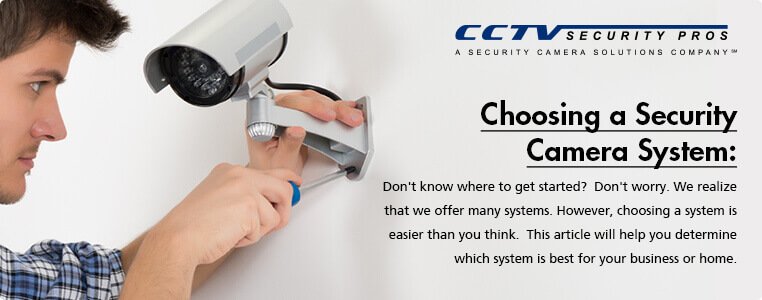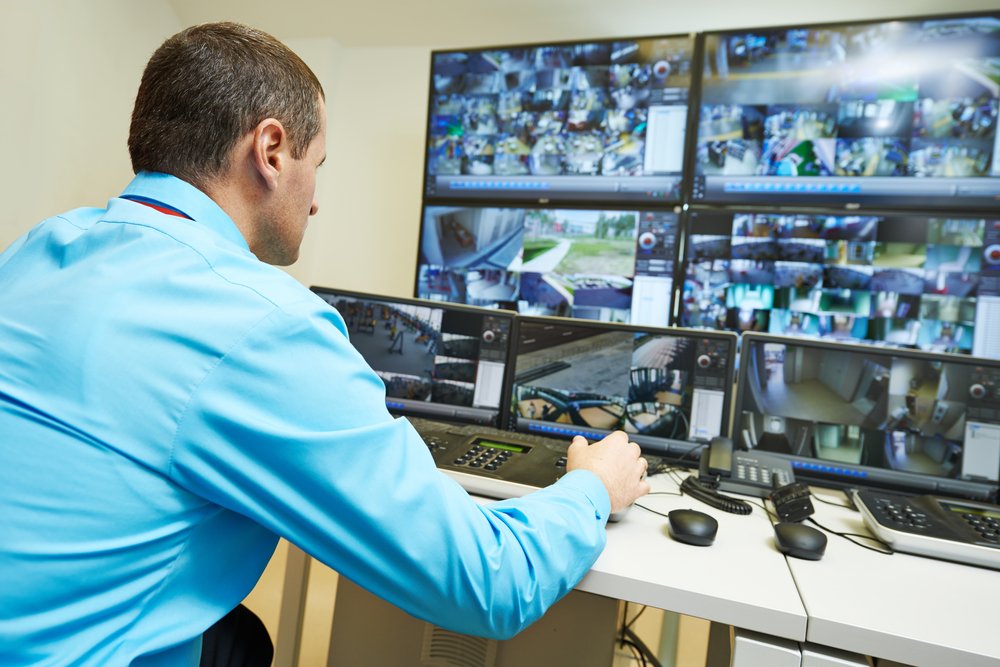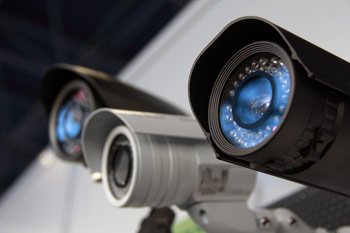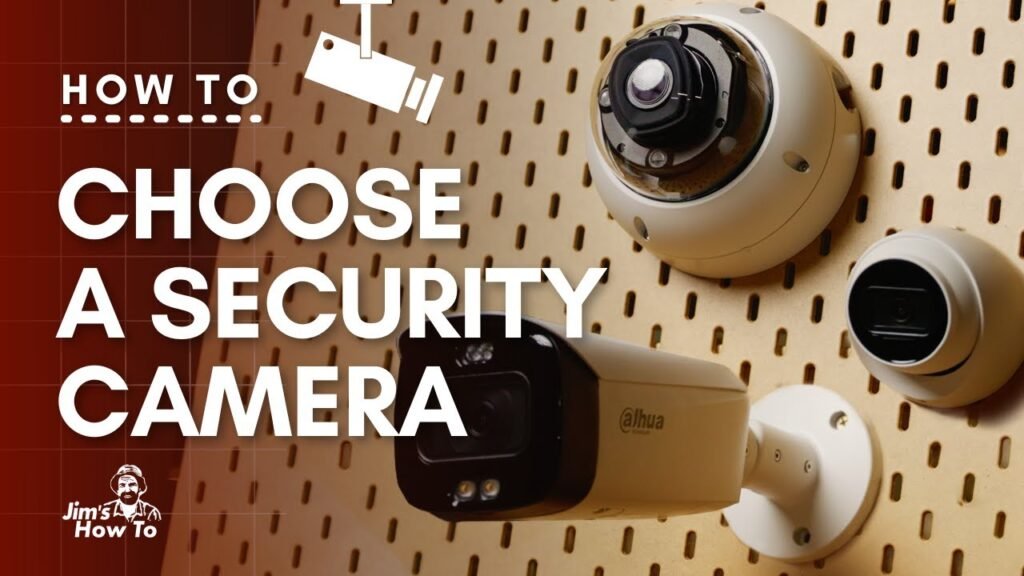Are you looking to enhance the security of your home or business? Choosing the right surveillance camera system is crucial, as it can provide you with peace of mind and protect your valuable assets. With so many brands to choose from, including Ring, Nest, Arlo, Wyze, SimpliSafe, Eufy Security, Blink, and many more, it can be overwhelming to determine which one is best suited to your needs. In this article, we will explore the key factors to consider when selecting a surveillance camera system and discuss some of the top brands in the market. By the end, you’ll have the knowledge and confidence to make an informed decision and create a secure environment for yourself and your loved ones.
Factors to Consider
When it comes to choosing the right surveillance camera system, there are several factors to consider. Each factor plays a crucial role in determining the effectiveness and functionality of your surveillance system. By understanding these factors and their different options, you can make an informed decision and select the best surveillance camera system for your needs.

Types of Surveillance Cameras
One of the primary factors to consider when selecting a surveillance camera system is the type of cameras you want to install. There are several different types available, each with its own unique features and benefits. Here are the most common types of surveillance cameras:
Dome Cameras
Dome cameras are popular for both indoor and outdoor surveillance. Their dome-shaped design helps in discreet monitoring as it is difficult for people to determine the direction of the camera. Dome cameras are typically vandal-proof and provide a wide-angle view, making them ideal for monitoring large areas.
Bullet Cameras
Bullet cameras are known for their sleek and cylindrical shape. They are often used in outdoor settings and are highly visible, acting as a deterrent to potential intruders. Bullet cameras are weatherproof and feature a long-range lens, making them a great option for monitoring outdoor spaces such as parking lots or building entrances.
PTZ Cameras
PTZ (Pan-Tilt-Zoom) cameras offer flexibility and versatility in monitoring. These cameras can pan horizontally, tilt vertically, and zoom in and out to capture specific areas of interest. PTZ cameras are commonly used in larger surveillance systems, such as in commercial buildings or large outdoor areas.
Wireless Cameras
Wireless cameras offer easy installation and mobility, as they do not require extensive wiring. These cameras use Wi-Fi or other wireless technology to transmit video and audio signals, providing flexibility in camera placement. Wireless cameras are suitable for both indoor and outdoor use and are often used in residential settings.
Hidden Cameras
Hidden cameras, also known as covert cameras, are designed to blend seamlessly into their surroundings, providing discreet surveillance. These cameras are typically small and can be disguised as everyday objects, such as clocks, smoke detectors, or even pens. Hidden cameras are commonly used for investigation purposes or for capturing footage without drawing attention.
Indoor vs Outdoor Cameras
Another factor to consider when choosing a surveillance camera system is whether you need indoor or outdoor cameras. Both types have specific considerations that are important to take into account.
Environmental Considerations
Indoor cameras are designed to be used in controlled environments, such as homes or offices. They are not exposed to extreme weather conditions or harsh elements, which means they do not require the same level of weatherproofing or durability as outdoor cameras.
Outdoor cameras, on the other hand, are built to withstand various environmental factors. They are weatherproof and designed to endure extreme temperatures, rain, snow, and other harsh conditions. Outdoor cameras are equipped with weather sealing to protect the internal components from moisture and other elements.
Weatherproofing
When selecting outdoor cameras, it is crucial to consider the level of weatherproofing they offer. Look for cameras with an IP (Ingress Protection) rating, which specifies the camera’s level of protection against dust and water. The IP rating consists of two digits, with the first digit indicating the protection against dust and the second digit indicating the protection against water. The higher the numbers, the greater the level of protection.
Vandalism Resistance
In outdoor environments, surveillance cameras are more susceptible to vandalism and tampering. If your location is prone to vandalism, consider cameras that feature a robust housing and impact-resistant materials. Some cameras even come with built-in protective features, such as polycarbonate domes or metal casings, to deter potential vandals.
Resolution and Image Quality
The resolution and image quality of a surveillance camera have a direct impact on the clarity and detail of the footage captured. When selecting a camera, it is important to understand the different resolution options available.
Standard Definition (SD)
Standard Definition (SD) cameras offer basic image quality with a resolution of 480p. While SD cameras may be sufficient for certain applications, they do not provide the level of detail necessary for clear identification or playback of footage.
High Definition (HD)
High Definition (HD) cameras provide clearer and more detailed video footage compared to SD cameras. HD cameras typically have a resolution of 720p or 1080p, allowing for improved identification and recognition of objects and individuals.
Ultra High Definition (UHD)
Ultra High Definition (UHD) cameras, also known as 4K cameras, offer the highest level of resolution and image quality. UHD cameras have a resolution of 2160p, providing exceptional detail and clarity. These cameras are ideal for scenarios where the highest level of image quality is required, such as in large commercial spaces or critical surveillance applications.
Coverage Area
Coverage area refers to the field of view that a surveillance camera can capture. Different camera types offer varying coverage options to suit different monitoring needs.
Wide-Angle vs Narrow-Angle
Wide-angle cameras have a larger field of view, allowing them to capture a broader area. These cameras are often used in wide open spaces, such as parking lots or warehouses, where a wide coverage area is essential. Narrow-angle cameras, on the other hand, provide a more focused and zoomed-in view, making them ideal for areas that require detailed monitoring, such as entryways or cash registers.
Pan-Tilt-Zoom (PTZ)
PTZ cameras offer the ability to pan horizontally, tilt vertically, and zoom in and out. This allows for flexible adjustment of the camera’s view and enables tracking of moving objects or individuals. PTZ cameras are commonly used in scenarios that require active monitoring and tracking of specific areas of interest.
360-Degree Coverage
Some surveillance cameras offer 360-degree coverage, allowing them to capture a complete view of the surroundings. These cameras use multiple lenses or a single fisheye lens to achieve a panoramic view. 360-degree cameras are often used in large open areas, such as airports or shopping malls, where comprehensive coverage is essential.

Night Vision Capability
Night vision capability is a crucial feature to consider, especially if you need surveillance around the clock. Different surveillance cameras offer various night vision options to ensure visibility in low-light or dark environments.
Infrared (IR) Illumination
Many surveillance cameras are equipped with infrared (IR) illumination, which emits invisible infrared light to illuminate the surroundings. IR illumination allows the camera to capture clear images and video footage even in complete darkness. When selecting a camera with IR illumination, consider the range and strength of the IR LEDs, as this will determine the distance and clarity of night vision.
Low-Light Performance
For areas with low lighting conditions but not complete darkness, consider cameras with superior low-light performance. These cameras use advanced image sensors and technologies to enhance visibility in challenging lighting conditions, ensuring clear and detailed footage even when lighting is limited.
Audio and Two-Way Communication
Audio capability and two-way communication can greatly enhance the functionality of a surveillance camera system. This feature allows for not only video monitoring but also the capture of audio and the ability to communicate remotely.
Built-in Microphone
Some surveillance cameras come with a built-in microphone, enabling the capture of audio along with video footage. This can be useful for scenarios where audio evidence is required, or for monitoring areas where sound cues are essential, such as in baby monitoring or office environments.
Full-Duplex Audio
Certain cameras offer full-duplex audio, which allows for simultaneous two-way communication. This means you can not only hear what is happening but also speak and communicate in real-time. Full-duplex audio is particularly valuable in situations where remote communication is necessary, such as in-home security or business environments.
Noise Cancellation
To ensure clear and intelligible audio, consider cameras with noise cancellation technology. This feature reduces background noise and interference, resulting in clearer audio capture and communication. Noise cancellation is especially important in outdoor settings, where wind, traffic, or other environmental sounds may affect audio quality.

Power Source
The power source of a surveillance camera is an essential consideration, as it determines the camera’s flexibility and installation requirements.
Wired Cameras
Wired cameras require a direct connection to a power source and, in some cases, a network connection. They are typically powered by an electrical outlet or a Power over Ethernet (PoE) setup. While wired cameras offer a reliable and constant power supply, they can be more challenging to install due to the need for wiring and connections.
Battery-Powered Cameras
Battery-powered cameras offer the advantage of flexibility and ease of installation. These cameras are wireless and rely on rechargeable batteries for power, making them suitable for locations where access to electrical outlets is limited or not available. However, it is important to consider the battery life and the need for regular maintenance or recharging.
Solar-Powered Cameras
Solar-powered cameras combine the benefits of wireless installation and environmentally-friendly power. These cameras use solar panels to convert sunlight into electricity, eliminating the need for a wired power source or batteries. Solar-powered cameras are ideal for remote areas or locations with abundant sunlight, providing a sustainable and self-sufficient surveillance solution.
Connectivity Options
Connectivity options determine how the surveillance cameras transmit video and audio signals, and how they can be accessed and controlled remotely.
Wi-Fi
Cameras with Wi-Fi connectivity can connect to your local wireless network, allowing for easy access and control from smartphones, tablets, or computers. Wi-Fi cameras provide flexibility in camera placement and offer the convenience of remote monitoring and management.
Ethernet
Ethernet-connected cameras use a wired network connection for transmitting video and audio signals. These cameras offer a stable and reliable connection but may require additional cabling and infrastructure for installation.
Cellular
Cellular-connected cameras rely on a cellular network to transmit video and audio signals. Cellular connectivity is particularly useful in areas without access to Wi-Fi or Ethernet connections, such as remote locations or construction sites. It provides reliable remote access and monitoring options.
Bluetooth
Bluetooth connectivity allows for local wireless communication and control between cameras and other devices, such as smartphones or tablets. This can be useful for quick and direct access to camera settings or for pairing additional accessories, such as speakers or microphones.

Storage and Accessibility
The storage and accessibility of recorded footage are crucial aspects of a surveillance camera system. You need to consider how the footage will be stored, how accessible it will be, and the capacity required.
Local Storage
Some cameras offer local storage options, allowing the footage to be directly stored on the camera itself. This can be achieved through built-in memory cards or through the use of external storage devices, such as USB drives or network-attached storage (NAS) devices. Local storage provides immediate access to footage and eliminates the need for a separate recording device.
Cloud Storage
Cloud storage is an increasingly popular option for surveillance camera systems. It allows for the footage to be securely stored in the cloud, accessible from any device with an internet connection. Cloud storage offers the advantage of remote access, scalability, and automatic backup, ensuring that your footage is safe even in the event of camera loss or damage.
Accessibility and Retrieval
When choosing a camera system, consider how easily you can access and retrieve the recorded footage. Look for cameras that offer user-friendly interfaces and intuitive controls for browsing and searching through the footage. Some camera systems also provide advanced features, such as motion detection alerts or event-based recording, which can simplify the retrieval process.
Budget
Budget is an important factor to consider when selecting a surveillance camera system. The cost of cameras can vary greatly depending on their features, capabilities, and brand. Here are three general categories to consider:
Entry-level Cameras
Entry-level cameras are typically the most affordable option. They offer basic features and functionality, such as standard definition video quality and limited storage options. Entry-level cameras are suitable for small-scale applications or for those on a tight budget.
Mid-range Cameras
Mid-range cameras provide better image quality, higher resolution options, and additional features, such as night vision or audio capabilities. They offer a good balance between affordability and functionality, making them suitable for most residential or small business surveillance needs.
High-end Cameras
High-end cameras offer the latest technology, superior image quality, advanced features, and extensive storage options. These cameras are typically used in larger-scale installations or in applications where the highest level of security and surveillance is required. High-end cameras may come at a higher price range, but they offer top-of-the-line performance and functionality.
By considering these factors, you can narrow down your options and choose the surveillance camera system that best meets your specific needs and requirements. Remember to consider the brand reputation and reliability when making your final decision. Brands such as Ring, Nest, Arlo, Wyze, SimpliSafe, Eufy Security, Blink, August Home, Honeywell Home, Ring Alarm, Vivint, Abode, Swann, Reolink, TP-Link Kasa, Logitech Circle, ADT, Schlage, First Alert, and Kangaroo are known for their quality and innovation in the surveillance camera market.

